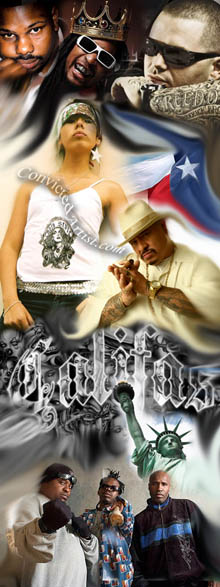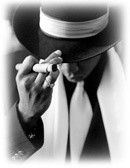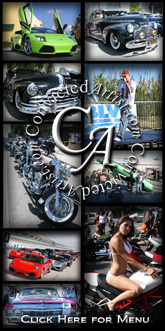






The Differences That Define Rap/Hip-Hop
(From Coast to Coast)
By: Ron “Mr. Kane” Alexander

Greetings to all. This here is another Convicted Artist exclusive presented by Mr. Kane. This time on the differences that defines Rap-Hip-Hop from coast to coast. You already know I’ve got to keep em coming. I hope you devoted music fans have been keeping up with my choice of topics in which are interesting to the Rap and Hip Hop community. My last ones “Rap N Real Life” and “What’s Beef” I truly hoped you all enjoyed as well. I’d like to give big ups to my boys Mr. Casper, Blue, J-Real and soon to be introduced Big Temper. Much love to Convicted Artist as a whole in which is here to stay. Please allow me to kick this off ‘09 style so brace yourselves while I hit you with this interesting topic.
Now due to this discussion at hand, I come to find this topic very diverse. If you actually take the time and dissect the differences in Rap-Hip-Hop by regions then you will find there is a lot to be discovered. It is also common, depending on where you come from that the chances of you being more “adapted” to your coastal and cultural sound are very high. Allow me to give an elaborate example for instance, myself Mr. Kane being from Texas and growing and up in Texas culture automatically places me in position to where my environment reflects on me as a person. In almost every way from character to dialect, to slang, accent, style and practiced behaviors so that “I feel safe to say” is where and how the differentiation come into play.
Rap and HipHop of the East Coast
Now let’s start with East Coast music since this is where Hip Hop supposedly originated. Some of you who are old enough may recall early acts such as Sugar Hill Gang, Grand Master Flash and the Furious Five who most claim are the experimental creators of Hip Hop. The creation was phenomenal and turned out to be successful as well. But both acts being from New York determines why this art form started from there. If you look at East Coast culture, life styles, and their environmental differences, it’s not hard to figure out that things are a lot quicker out there. Let’s look at New York’s population. If I’m not mistaken New York City alone has well over 8 million people, which is quadruple the size of any one of Texas’ major cities. But why is it that Texas (land wise) is almost 6 and half times bigger than New York? Good question. So by everything being so cluttered in such small areas, it forces its citizens no other choice but to interact with mass amounts of people.
Privacy is hard to find in New York . Most New Yorkers do not drive due to it’s over population. So people rely on cabs or use subways as vital forms of transportation. Interacting with so may people and personalities really doesn’t make Hip Hop hard to come up with.
So it’s understandable that Rap/Hip-Hop originated out there. But, one thing that probably wasn’t on their minds was whether or not other regions chose to pick up this trend and art form. So later on, you had groups like Run DMC, who had a totally different image from their older counterparts. Addidas foot wear became popularized, and the early Def Jam arose to power. Dookie ropes were in style and so were Kangols.
Mercedes Benz was the car to drive (even though the East never had a car culture) and jumpsuits were the cloths to wear. Then Beat boxing trends, boom boxes and car phones emerged. East Coast dialect was unique and its Rap music had a lot of sampling in it. Back then, 808’s and 909 drum kits were popularized too. You had artists such as “The great Eric B & Rakim, Big Daddy Kane, Special Ed, and Public Enemy, all promoted the political rap movement. Eric B & Rakim, especially, mastered street talk and had a strong impact in East coast Rap. Paid n’ Full was, and still is considered a rappers favorite album in the East Coast. As time evolved, styles changed, and ruggedness became their signature mark. Timberland boots, baggy sweatshirts, hoodies, bubble coats, high top fades, and designs in haircuts became the trends to follow. Even then (and still to this day), they had a very distinctive slang. Most of the words that are common in the East Coast may not be understood anywhere else. A lot of older rappers opened doors for newer artists such as “Wu Tang Clan”, “Nas”, “Jay-Z”, “Biggie”, “Lil Kim”, “Junior Mafia”, “Diddy”, “Mase”, “Jadakiss”, (Lox), “DMX”, “50 Cent”, “Fat Joe”, and many more. Most East Coast Rap focused more on lyricism. Production really didn’t play a big factor with most artists until the “Biggie”, Jay-Z’s and 50-cents’s came along. Before hand, it was mostly about lyrics and samples. New York culture was exposed in videos and movies as well. The movies that really define East Coast Rap are “Belly, Juice, New Jersey Drive , Pain N’ Full and New Jack City . In most of the movies, you will find subways, Timberland boots, heavy slang, buildings and so on…
Rap and HipHop of the West Coast
Now please allow me to shift over to the West Coast where the climate is always beautiful and the people are not as crammed up. West Coast rap had a very supreme run, in which many thought would ever end. Fame and fortune is definitely nothing new out west. Lowriders and other fine cars is a way of life, and the street lifestyle is freely presented to everyone. Gangsta life, in a sense, has an artistic side to it out west. But that’s only when it’s presented the right way. Back when the East Coast established themselves, the West was still discovering its Hip Hop roots. Early musical pioneers, such as Parliament, Funkadelic, Zapp and Roger, Bootsie Collins, George Clinton, and may more stood out. They truly showed everyone the meaning of “Funk” throughout the late 60’s and 70’s. Those memoirs alone have everything to do with where the West inherited its bounce and groove sound from. Back in the mid 80’s we had the “World Class Wreckin Cru”, making hits. “Dre.Dre” started off with this group. There were other acts out as well, but many were unrelated to Hip Hop. Unlike the cluttered East, West coast cities and suburbs are spacey and well proportioned out. If I’m not mistaken, the city of Los Angeles has a population of 3.8 million people, San Jose has almost a million, while major cities in the northern bay area collectively number a people population of over 7 million. So there is a lot of land mass to move around in. But Southern Cali is quite different from the Bay area. L.A’s surrounding cities, such as Compton , Long Beach , Watts, Inglewood and others have a deep rooted Black and Hispanic gang culture. Around the Bay, it’s not as extreme, but there are poverty stricken areas too. During the late 80’s is when N.W.A, Easy-E, M.C. Ren, Dr. Dre, Ice Cube, DJ Yella, D.O.C. revealed to the entire world that Rap and Hip-Hop was not just an East Coast thing. Ruthless Records, founded by Easy-E, brought a whole different side of rap music to the table. Not only did it blend in with the West Coast culture, but also created serious trends. Street talk, gang violence, anti-police sentiments and hustling really didn’t get mentioned much until N.W.A presented it to the world. It set fashion trends like Dickies clothing, Chuck Taylor Converse, Raiders caps (or hats with sports teams reppin certain cities), jersey’s, jheri curls, braided hair styles, tall-tee’s and beepers. Once the West Coast took off, many politicians tried to stop it. But the West seemed too strong of a force to be reckoned with. After the break up of N.W.A, its members Easy-E, Dr. Dre and Ice Cube were the first to leave and start a solo career in which they all succeeded in. They also managed to keep the gangster and lowriding culture alive as well. The lowriding culture, which originated in Mexican barrios, somehow emerged to all and later became a West Coast thing. You also had Chicano rappers formulating ways to get their selves heard too. Artists such as “Kid Frost”, made a name for himself with hits like “La Raza”, “Its A Thin Line” and “Lowrider”. The West Coast way of life was further exposed by Cypress Hill, in which turned out to be very successful and had hits like” Insane In The Membrane” and “How I Could Just Kill A Man”. Then came “Snoop Dogg”, (Dr. Dre’s protégé) who went on to make several classic albums, and sell millions of records by guidance of Dr. Dre. There were many more acts like “The Dogg Pound”, “Spice 1”, “Too Short” (who started in the 80’s, out of Oakland), “Brotha Lynch Hung”, “Mac-10”, “Dub-C”, “Lighter Shade of Brown”, “D.J. Quik”, “M.C. Eiht”, “C-BO”, “Luniz”, “E-40”, “B-Legit”, “The Click”, “Richie Rich”, “Ice-T”, and the legendary “2-Pac” (R.I.P). The names mentioned had a major influence and contributed in the West Coast takeover. Some of the Bay, and some from Southern Cali , set the format of exposure for the West Coast Rap and culture. There’s many more to name, but the list is never ending. This is when record sales were at an all time high. This is what many enjoyed listening to, and emulating. But, of coarse things always shift and change. The West Coast Music (Rap) also influenced movie producers to express this way of life through films. I’m sure you all remember movies like Colors, Menace to Society, Boyz in The Hood, Baby Boy, Training Day and many others in which define the west Coast “Rap n’ Real life combined. From the streets stand point at least.
Rap and HipHop of the Dirty South
Last but not least, let’s take a trip down to the diversified South which consists of almost 10 states. Around the late 80’s, the South really didn’t have an established Rap/Hip-Hop scene. One thing people do give us credit for is the fact that we are willing to accept both sides (East and West) and embrace their music. We have a very diverse culture as well. There was a point where we were stereotyped, due to our country roots. As far as Rap history goes, back in the mid to late 80’s, a Houston, TX based group called the “Geto Boys” were locally doing their thing. Before “Scarface” entered the group, the same original members were still there along with a rapper called “K-9”. Once Scarface entered the group, they slowly transcended into stardom. Back then the smash hit “Mind Playin Tricks On Me” received airplay; a lot of people still didn’t acknowledge the South. In fact, many from other regions didn’t even know they were from Houston . But what I truly credit them for is the inspirational shed they made throughout the South. In Texas, many different Record labels, (Indies and Major’s), artists and music started to emerge and as far as culture wise, we were still unknown to the rest.
Just like California, Texas has always had a strong car culture. Cadillac’s, old schools and slow riding cars, candy painted slabs, and grills has always been traditional down south. Screw music has been around way longer than most of the world knows. It’s been a part of Houston, Louisiana, and parts of other states down south for almost 17 years now. And just recently, within the last 3 to 4 years, is when the rest of the world catches on to what it is. Pioneers like the legendary “D.J. Screw” (R.I.P), enforced the Skrew sound all throughout Houston, Dallas, and other major cities throughout the South. He even had his own freestyle click (SUC-Screwed Up Click) that consists of some of H-Towns hard hitters. Down south, there are several diversified sections. Some crease their jeans while others sag and sip lean. Some dance, grind, or make moves in the trap while others gang bang. Our slang is extremely different from the rest, as well as dialect and style. Florida is known for its “up-tempo” sound, introduced by old school artists like “2 Live Crew”. But now, Florida has a mixture of styles music wise too. There’s a lot of successful talent coming out of Florida now. They also have an extreme Drug Trade History, so Cubano culture plays a big part in Florida music too. Atlanta Georgia , has a deep Hip-Hop culture that goes back as far as (artists and groups) “Outkast (legends). Kriss Kross, and Goodie Mob”. Organized Noise, and Laface Records, So So Deg, Def jam South, made their mark, and laid the format and foundation for Atlanta. In Texas, in the early 90’s, “Suave House, and Rap-A-Lot” were the power houses. You had duo’s like (the legendary) “8-Ball and MJG”, originally from Memphis, Tennessee, signed to “Suave House”. And the legendary “UGK”, inked a deal with “Jive” records, and their mark and influence on Southern music real firm. “Pimp-C” (R.I.P), “Ridin Dirty”, a certified classical album, is probably the most intensified way to describe Texas Rap and culture. At a time, these two acts were the only ones besides the “Geto Boys” making a legitimate name for the South, “Rap-A-Lot” (Founded by Tony Draper) around this time had a huge roster of talent in which established the Southern sound. And that sound consists of dragging baselines, and habitual use of high hats. Suave had artists like “Mr. Mike” (Corpus Christi, Texas) “Crime Boss” (Houston), “Tela” (Houston), South Circle” (Houston, “Ghetto Twinz” (Louisiana) and many more. Rap-A-Lot had a very thick roster, which some were even West Coast artists. The Louisiana culture, with it’s “French/Creole” and “Zadico dance roots had, and still does, two major multimillion dollar Rap empires. “Cash Money”, and “No Limit Records” Master P, and Brian “Baby” Williams, established the Louisiana sound in Memphis, Tennessee, you had “Luke”, and the “Miami Bass Movement”. As of right now, some of these acts are just now starting to get the shine they deserved long ago. Some came, and some went, but still made an impact so strong to where we are unstoppable till this day. Now-a days, you have artists like T.I., Young Jeezy, Lil Jon (Crunk Movement), Ludacris, Lil Wayne, Rick Ross, Plies, Jermaine Dupree, David Banner, Slim Thug, Paul Wall, Chamillionair, Trae, Z-Ro, the legendary Lil Keke, SUC, Wreck Shop, and countless others. The South as of right now, is very relevant. But it took a lot of years, hard work, and dedication to get what we deserve. Some Southern hip-hop flicks in which define the South, are “I’m Bout It”, The Last Don, ATL, Choices, Balla Blackin, and lots of other independent films. Southern Hip-Hop and culture stands out from the rest, and at the same time, embraces the rest. There are other areas in where Rap/Hip-Hop had an affect also, along with other major talent too. But, History wise, these other areas don’t go back as far as these 3 regions. Fortunately, it is safe to say, that rap/Hip-Hop is now a world wide thing now. Once again, I’d like to thank “C.A.”, all my boys out there keeping my name alive, much love to all my homies on lock. Less than 3 months, and I will be back on the scene. “Tales Frum The Metrosection: (Well Known ENT) coming soon, I hope you all enjoyed this interesting topic. Be safe.
Ron “Mr. Kane” Alexander
More from “J-Real and soon to be introduced) “Big Temper” coming soon
Related Links
Rap 'N Real Life - The Politics 'N Between
Gangsta Rap (True Cause and Aftereffect)
Music Producers - Masterminds Behind The Music
Hip Hop (Past, Present, and Future)
